

Oathbound
 Epidemic Books is proud contuinue the line of Oathbound products under the original creative team of Greg Dent and Todd Morasch.
Epidemic Books is proud contuinue the line of Oathbound products under the original creative team of Greg Dent and Todd Morasch. Current Oathbound products are published using the Pathfinder OGL rules as published by Paizo, Inc.
What is Oathbound?
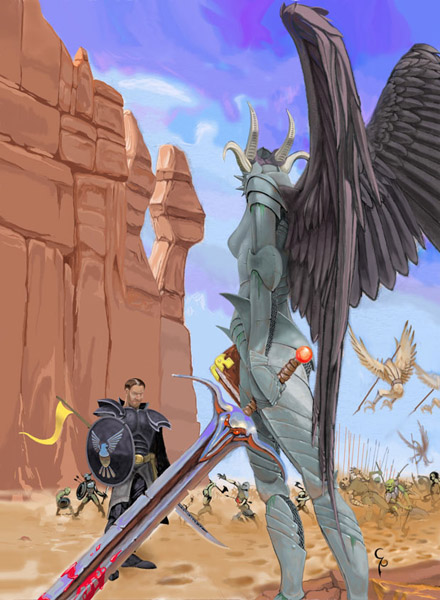
Oathbound is an independent campaign setting that Todd and I created at Bastion Press in 2002 for the world's most popular role-playing game. (For those not familiar with the term, a campaign setting is essentially a tourbook to another world.) Initially, Oathbound was written using the d20 ruleset, but all new material adheres to Pathfinder standards. Oathbound was split off of Bastion Press in 2006 and Epidemic Books was born.
Oathbound represents our first and best known product line. We detailed about half of the world of the Forge in our time at Bastion, and are committed to finishing what we started. Oathbound will be supported by new campaign books, adventures, downloads, freebies, maps, supplements, and more as time allows.
Note: Oathbound was intended from the beginning to be a high powered game with mature themes and adult concepts, and is not well-suited for kids. Youngsters should check out our children’s products line instead.
Overview
Oathbound is a world of extremes. Many of the limitations of a standard fantasy setting have been removed here. People and objects (and even buildings) can be pulled in from countless worlds, each unique and different—ranging from primitive to civilized to highly advanced. The planet itself is a patchwork, built (not naturally formed) by Seven mysterious immortals known collectively as the Black Flock. Each of the Seven is bound to a particular region of space, or a domain, which is its to control and command. Each has access to a different set of gates from which to draw things in, giving a different flavor and style to each of the Seven domains.
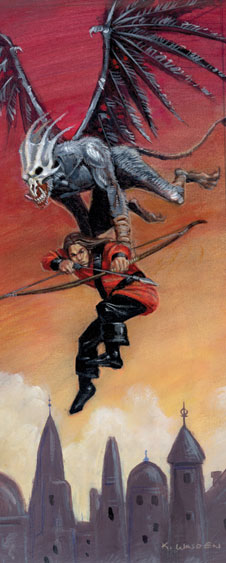
One of Oathbound's most versatile qualities is that characters can be pulled in right from other games, allowing an old story to continue in an entirely new setting. Characters can transition in for a night, for a few weeks, or for a lifetime. The iconic Oathbound experience is one had by outsiders pulled into the Forge from foreign worlds. While the quest is initially to find a way to return home, the world of the Forge in the end becomes intoxicating and the outsiders end up finding new lives in the world of the Oathbound.
First impressions of the Forge are generally some form of extreme culture shock, as the world has developed over millenia as a grand patchwork of the races and cultures of a thousand worlds, but this is also what makes it so hard to go back home again. To an outsider, the senses are enhanced on the Forge (natives have nothing to compare it to), so everything here feels more intense. This is due to an unknown source of uncontrolled divine energy radiating out from the prison in the center. This unfocused magic has many uses for the inhabitants of the forge, not the least of which is the ability of the people of the Forge to spontaneously evolve, their bodies adapting and forming to enhance their primary skills far beyond the realm of human possibility.
Oathbound presents an epic struggle against divine forces, where players must strive to uncover ancient secrets and shape the destiny of an entire world. In this world of extreme sensations and passions, strength and power truly matter! The heroes in Oathbound stories are not merely powerful—they are the most powerful heroes in the cosmos. The powers that be gather the strongest and most promising heroes in the multiverse and push them to their maximum potential, pitting them against supreme villains of unimaginable evil. The main driving motivations of the Oathbound setting are freedom and power, which work in opposition to one another and serve to keep the stories going. For the most part, the more power each character has, the less freedom is available to him. Those with freedom desire power, and those with power, freedom.
The Forge
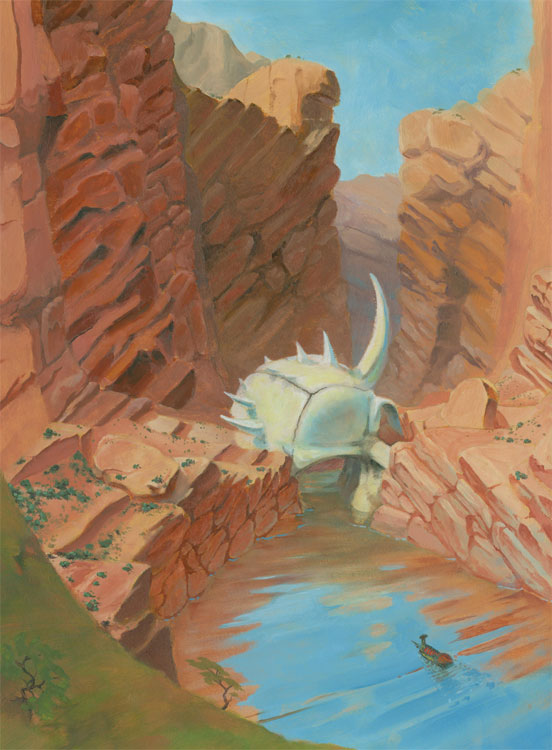
Oathbound consists of a single plane of existence in which lies a single planet, called "the Forge", which has two moons and two suns that orbit around it. The "stars" visible in the sky are actually one-way portals to millions of other worlds and planes of existence through which people and objects may be pulled in by the guardians of the Forge, the Seven of the Black Flock.
Ages upon ages ago, a great council of a thousand gods came together and drew up a great Oath, binding the Seven to this place as guardians of some great power beyond reckoning. For millions of years the Seven stood watch over the empty void. Though nothing can escape the prison of the Forge, anything may be drawn into its grip, and slowly, a world began to form in the empty space, a "forge" for heroes, drawn together in bits and pieces from thousands of other realms, and populated only with the greatest of the grand, forced to fight to the death at the whim of their new and strange masters. For only by finding a being more powerful than himself to take on his duty may one of the Seven slip the bonds of his Oath and be free once again.
For millennia, the battles have raged, and from the survivors, a distinct and wonderful orphan world has formed. Steeped in the radiant energy of the world itself, the colors here are brighter, the food more delectable, physical pleasure and pain more pronounced, and the inhabitants more beautiful than anywhere in creation. A rich culture has formed across the seven distinct domains of the planet, each dominated by the ever-watching presence of one of the Seven.
Today the Flock still stand watch over the Forge, more or less intact. The world itself is split into seven distinct domains, each controlled (and built) by a different member of the Flock. Each of the domains represents a distinctly different terrain and lifestyle. Borders between the domains are abrupt and distinct, although in some places there are grey zones where the power of the Oath has waned and another mysterious being has taken hold.
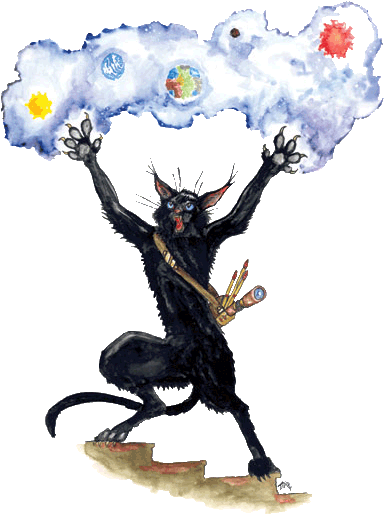
The Suns
The Forge has two Suns, a yellow one ("Crux") that orbits the planet on a flat plane, and a red one ("Storm") that is small and close in, orbiting on a tilt. The red sun gives the Forge its seasons, which are short, the full cycle lasting a month instead of a year. This enables crops to produce a dozen times as much bounty and to sustain the massive cities and armies of the Forge. One, none, or both suns may be in the sky at any one time. The yellow sun looks much like Earth’s sun, and the red one os smaller, and well… red. When the red sun is out, the sky is often red as well, like a massive sunrise filling the sky. There isn’t much night to be found on the Forge except on Eclipse.
The Moons
The Forge has two moons. One is large and formed of water (“Zadkiel”), orbiting opposite the red sun. The second moon (“Anahita”) is made of rusted metal and is ruddy in color. This moon orbits from pole to pole, and is the only body visible from Eclipse (and then for only a few days a month).
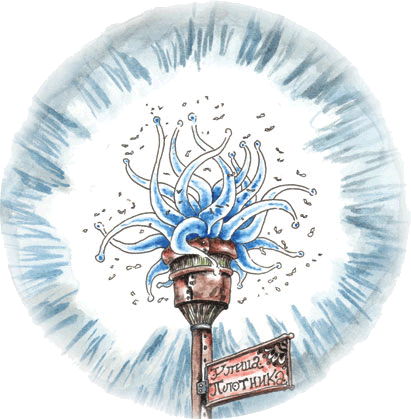
Flora and Fauna
The Forge has its own unique set of plants and animals. Each book takes care to detail some of the lesser creatures of the domains in addition to the more famous ones. Many of the Forge's plants and critters are useful for those who know their secrets. Others can be quite dangerous, and some are simply worth a pretty penny to the right buyer.
The Oath
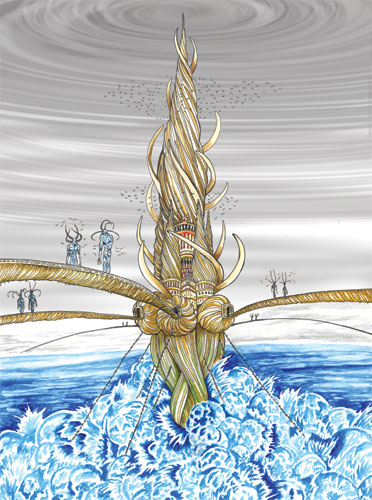
Being the creation of a committee of a thousand gods, the great Oath is astoundingly complicated. Each of the Seven is bound by slightly different rules, some even contradictory, and further wards were placed around the Forge (which were later built up into the moons and suns of the Forge), each with their own function. The oaths of binding essentially boil down to the following:
- No living creature (or god) may leave the plane of the Forge.
- No god may enter the plane.
- Knowledge of the secrets of the Forge is forbidden, and punishable by death.
- Efforts to break the Oath are punishable by death.
- The Seven are to be the executors of the oath.
- A member of the flock may not leave his domain.
- One of the Seven may only go free if he can find a more powerful being to take his place.
Outside of the Oath, the Seven may act or behave any way they please, and since they are immortal, frustrated, and eternally bored, they often do senseless things just for the sheer thrill of it.
Oddly enough, despite the distinct presence of the Oath, The Forge is not a particularly lawful world. The constant influx of outsiders and the meddling presence of the Seven makes it difficult for very complex legal codes to be crafted here. Colopitiron in Eclipse even goes as far as to proclaim his domain "free of laws". This doesn’t mean that one can act brashly and without thought; the inhabitants of the Forge are quite confident in their own abilities and well capable of standing up for themselves.
Look and Feel
The Oathbound setting has its own distinctive flair—dark and gritty, with a tendency toward ornate and extreme details and flourishes.
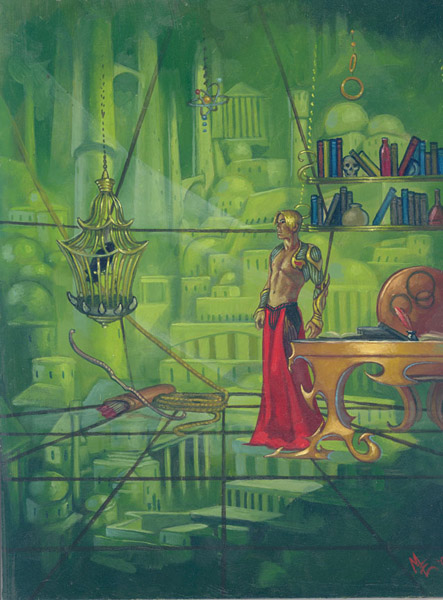
There is a distinctly ancient flavor to Oathbound. Lords keep exotic harems, workmen ride beasts through the streets, and battles are fought with sword and bow. Everything is unique and made by hand, and the artisans of the world pay close attention to detail and history. Though technologies exist, they are magical and archaic in nature. Modern guns, electrical devices, or vehicles, for example, are out of place in Oathbound, but their fantasy equivalents are possible.
The weight of the Oath of Binding lends a heavily symbolic air to the setting, with exaggerated imagery and strong visual keys. Because power and freedom are the driving forces for characters in this world, much of the symbolism revolves around these elements. For example, the Feathered Seven must drag heavy tomes on chains wherever they go, and even simple soldiers might have garish badges or uniforms to bind them to their lord. These structures (badges, swords, shackles, etc.) are all larger than life and a central part of a creature’s existance, whether they want it to be or not.
The imagery in Oathbound is viscerally savage and ornate, and the artwork is sinewy yet sensuous. The colors are composed of rust, iron, flesh, burnt orange, vibrant red, and black. Everything worth a second look in the world is dangerous. Even heroes are armed with glimmering weapons, their bodies changed and mutated by their own choices. Armor is based off a creature’s anatomy, a collection of muscles and bones that augment the creature’s physique. The blades and heads of weapons are oversized and highly detailed, and even the fangs of natural creatures are oversized.
There is an alien nature to Oathbound due to the inhbitants being collected from many different worlds. This applies to animals and plants as well as to characters. Horses, for example are exceedingly rare - a different standard mount has evolved in each of the domains. In Penance, this is the Kith, a large ridable homing cat that can climb most walls. In arena, the kine, a camel-like lizard is popular, and in Eclipse, the severn, a tough-as nails seven horned rhino is the staple.
Vernacular
The feel of Oathbound is reflected heavily in the language of the Forge, which is imbued with its own lingo and slang. A newcomer to the world, for example is known as a “seed”, and a native is called a “bounder”. The world has its own set of seasons, its own calendar, its own native flora and fauna, and its own astronomy, all of it giving the setting a distinct, non-generic, flavor that sets it apart from other worlds.
Oathbound slang is ground in common English for the most part, created based on derivations, synonyms, or connotations of the original words. Rashers are called such because of their rash decisions to face death in the undercity; bounders are those that have lived on the world for so long that they are bound to it; and seeds are newly arrived heroes that will either spout into maturity or whither away. See the Glossary in the original book for an extended vocabulary list.
Seven Domains
Each of the seven domains of the Forge has its own distinct look, feel, story, and secrets to tell. Each is dominated by a distinct terrrain and element, each providing a distinct challlenge to characters. So far, four of the seven domains have been expanded upon by published supplements. These are Penance (Oathbound DOF, Plains of Penance, Wrack and Ruin), Arena (Arena, Mysteries of Arena), Wildwood (Wildwood), and Eclipse (Eclipse). Anvil is next up, though we are still quite busy creating adventures and expansions for Eclipse.

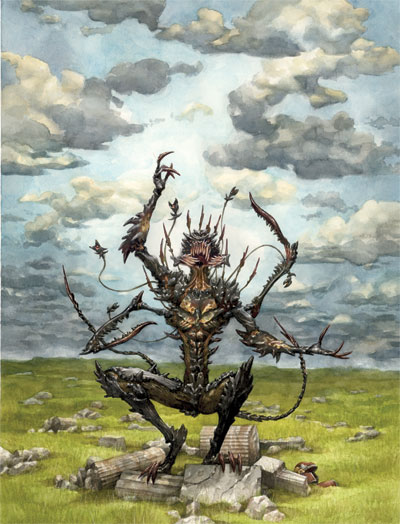
Penance
Penance represents civilization and the nurturing side of nature. It is a landscape of rolling grasslands, hot and sultry from the warmth of the double suns. At its center is the Pedestal, or the city of Penance, the center of culture on the Forge, so old that it is over a quarter of a mile high, built on ruin upon ruin of its former self. Penance is detailed in the books Domains of the Forge, Plains of Penance, and Wrack and Ruin. The great city of Penance is less a city and more a landscape of buildings, bordering on a natural formation. All of the waters of the Forge bubble up here from beneath at the Wellspring at the center of the domain below the Queen’s citadel. Penance's great Queen, Israfel, has fallen, and in her place is now a madman. The vacuum of her departure has thrown the world into turmoil, and for the last ten years, a massive war has raged here at the heart of the world.
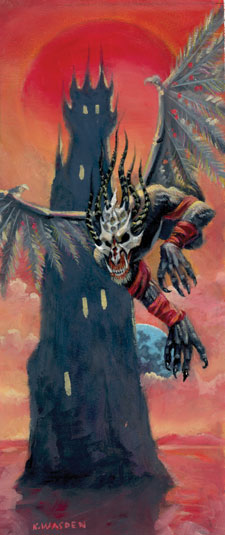
Arena
Arena is a vast red desert, sitting atop a wealth in minerals and metal ore. Large armies scour the desert, clashing with each other in mad fury to dominate the land and to secure enough wealth to gain a foothold in Penance. Arena is dominated by the warrior demon Barbello. Arena is detailed in the books Arena and Mysteries of Arena.
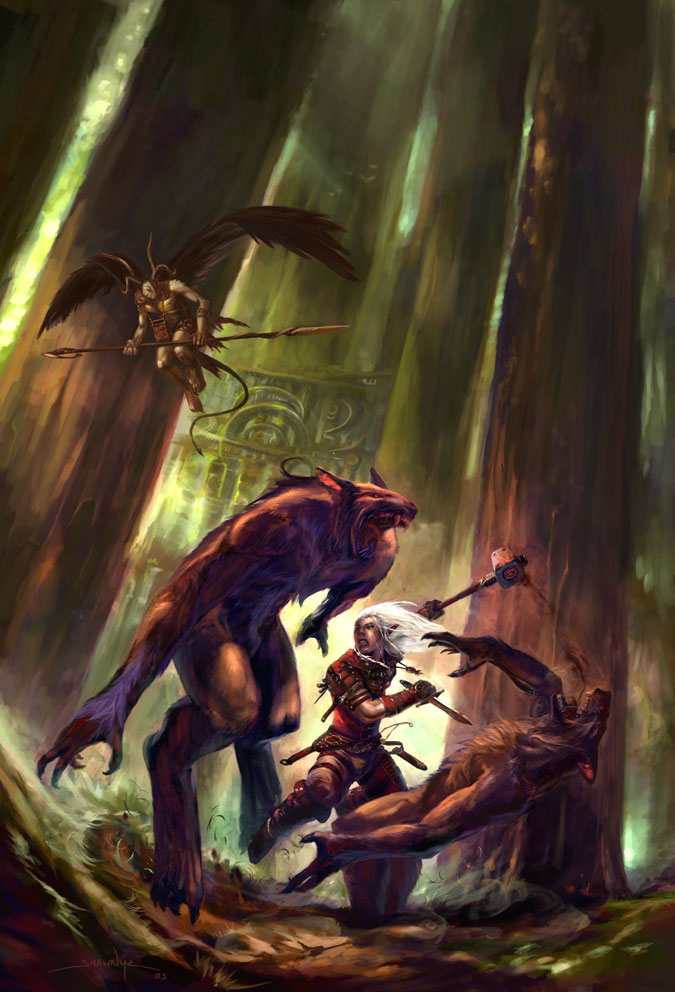
Wildwood
Wildwood represents the dangerous side of nature. It is a forest and a jungle gone mad, filled with the most terrible creatures and the hardiest of souls. Wildwood is patrolled by the hunter Haiel. Wildwood is detailed in the book Wildwood.
Eclipse
Eclipse is set in a crater at the north pole of the world, three miles deep. The crater warms the land via contact with the deep earth below, but also blocks out all sunlight. Eclipse is a land dominated by vampires, were creatures (we call them "werrans") and thieves. It is also home to fabulous artists and some of the Forge’s most breathtaking architecture. It is ruled by the rogue Annoxus, who took over from Colopitiron, the land’s creator some 50,000 years ago. Due to the Oath of Binding, Annoxus must be referred to by the name Colopitiron when formally addressed. Eclipse is the subject of Oathbound Eclipse.
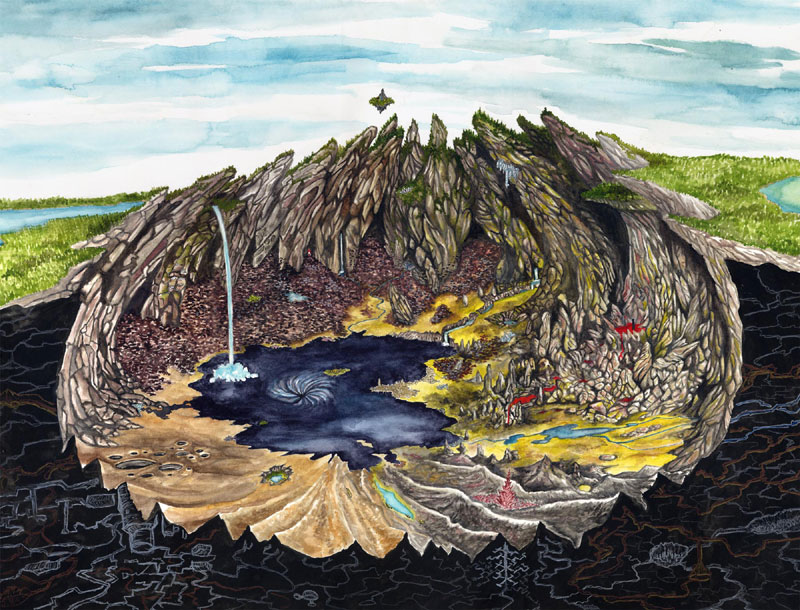

The Vault
The vault occupies the south pole of the Forge, and represents a landscape of eternal winter. It is a harsh land of undead and warlocks and primitive tribes. It is reluctantly managed by Nememiah, the leper. The Vault will be expanded later on in its own book.
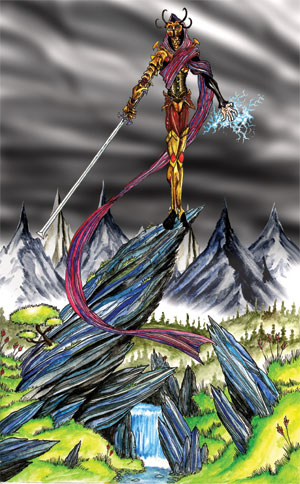
Anvil
Anvil is a region of craggy mountains and harsh winds. It represents a landscape of stone and air, and also contains a great network of underground civilizations. Above ground, the stormbringers are mastered by Orif’elle, the Scourge of the Wind. Anvil will be likely be detailed in 2011.
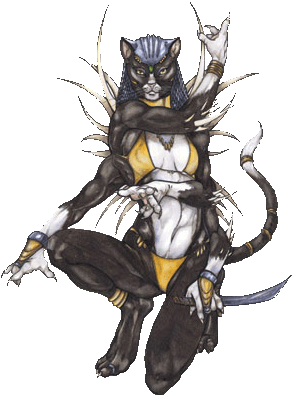
The Kiln
The Kiln is a volcanic landscape, and the smallest and most remote domain on the Forge. It is home to a monastic colony of six armed cats and a peaceful coastal culture. Bathkol, the once master of this land no longer rules. His citadel has crumbled and he wanders the Forge in disguise, stirring rebellion.
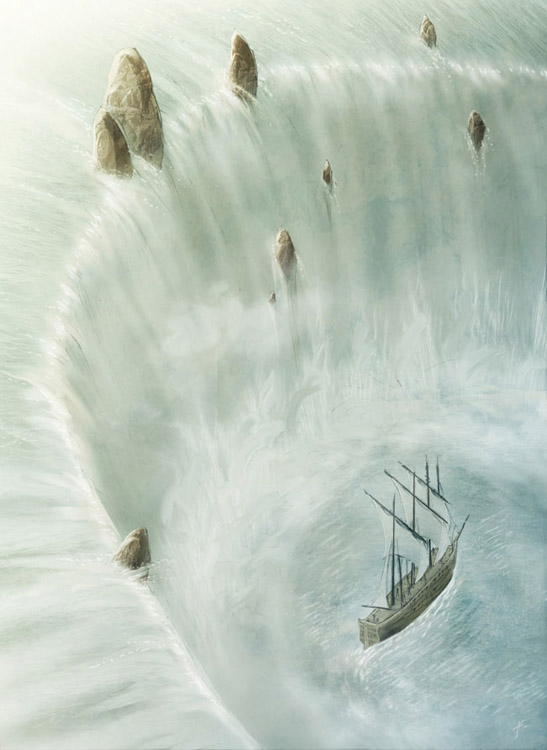
The Oceans
The oceans of the Forge also teem with life. They are not divided as distinctly as the lands (being liquid), they still fall under the control of various of the Seven, chiefly Haiel and Orif’elle. Most Oathbound products generally deal with some mention of underwater civilizations, but these have not yet been expanded upon in as much depth as the land areas.
The Seven
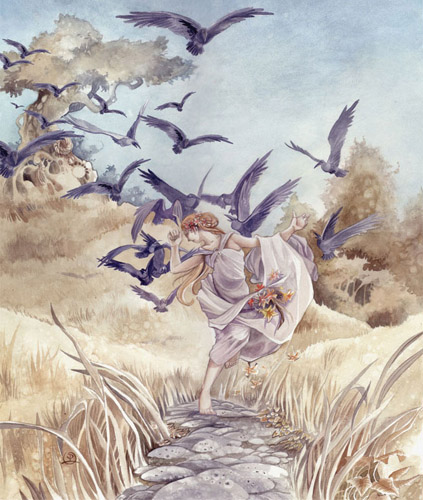
The seven members of the Flock, or the “Feathered Fowl” are the seven guardians of the Forge. With the exception of the two new additions of Colopitiron and Belus, these creatures have always been immortal, and existed long before the Oath or the Forge were made.
The ravens of the Seven are an iconic symbol of Oathbound. Each of the Seven can extend their consciousness into these birds, of which they have an inexhaustible supply. The birds are not dangerous per se, but they are spies for the Feathered Fowl, and anything they see and hear is instantly known to their master. In fact the Seven can instantly promote any of their birds to their full avatar, essentially teleporting themselves throughout their domain. The birds are also how the seven manage to pull things in from other worlds…they send the birds through the portal, and the ravens swarm their target and then teleport back to this master, bringing whatever they had surrounded with them, be it a tower, a hero, a dragon, or a little girl.
The Stranger
The Stranger is a mysterious being who has taken root in the grey areas between the cracks in the Oath. He is only able to wander the Forge at the borers of the seven domains, and his motives and identity are kept hidden. The areas where he can be found are quite strange, being grey in appearance and devoid of all color for no discernable reason.
Races of the Forge
What is Oathbound?
The Forge has its own set of races and species. The most iconic and common of which are as follows:
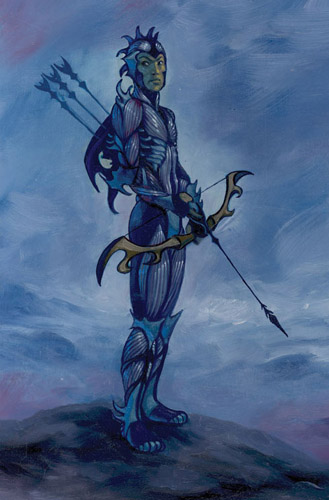
Humans
Humans on the Forge are essentially humans, though they have their own way of dress and their own distinct culture.
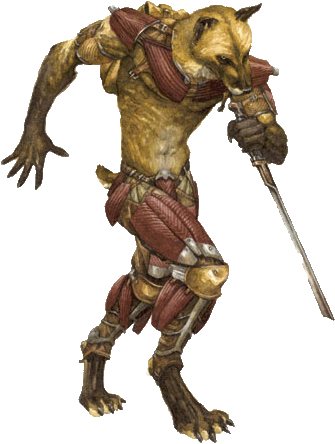
Dovers
The dover is the closest in personality to a human. It is essentially a human evolved from a dog. It has fur, a dog-like head, canine feet, and human-like hands. Dovers can take the appearance of different breeds of dogs, though the most common is a wolf-like countenace.
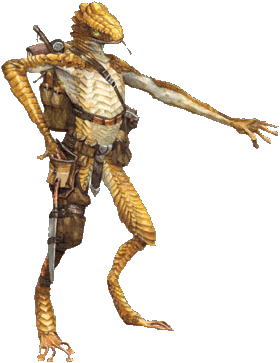
Pickers
Pickers are friendly and clever little lizard folk. Pickers are happy, fun-loving, free-sprirts, endlessly fascinated by curious objects and stories. They are the essential gypsy bardic tinker people.
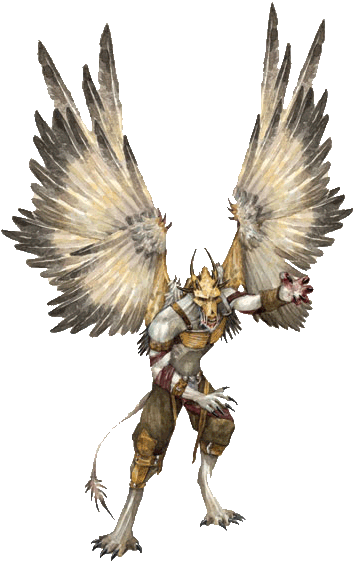
Asherake
Asherake are enormous winged feline humanoids. They have a furred muscular body with clawed hands and feet. They walk upright but have feline-like lower legs. Their wings are feathered, and their heads are monstrous, something like a saber-tooth with horns. Asherakes are warlike and quick to anger. Most asherakes remove the skin from their faces to appear more terrifying in battle.
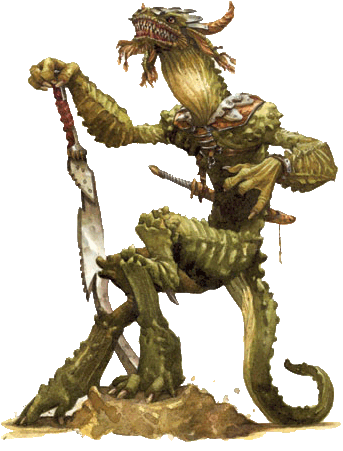
Nightlings
Nightlings are delightfully lazy lizard-like goblinoids. They are not generally so much evil as unable to conform to the rules of any other species. They are clever and astoundingly lazy, but can move like lightning when one least expects. They have green skin, crocodile-like teeth, clawed teeth and hands, triple jointed knees, horns, and ear tufts. Sucessful Nightlings are almost always fat, as they consider that a sign of success.
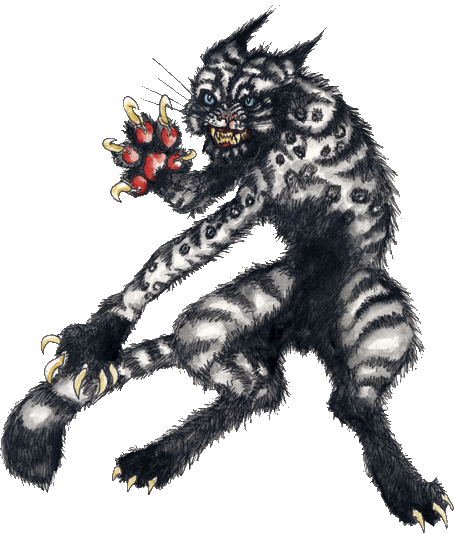
Frey
Frey are the feline equivalents of the dover…cats evolved into humanoid form. There are two varieties, the standard housecat type, which looks like puss in boots, and the wild frey, which looks like an upright cougar. Wild frey (the larger version) never wear clothes or use weapons... the smaller cats do though. Frey are both playful and dangerous, and always graceful and stylish.

Valco
Valco are stoic goat-like humanoids. They have hooves hands and feet though their hands have evolved opposable thumb-like sections. They have horns and fur like goats, but stand about the size of a man on doubled rear legs. In Arena, a sturdier version of the Valco exists, bearing ram horns. Valco are hard-working, honest labors and warriors that are closer to the land than humans.
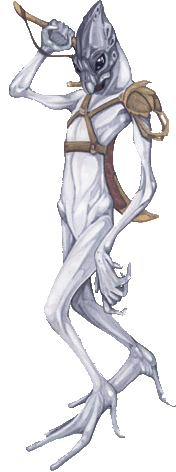
Silvers
Silvers are creepy metallic humanoids. They are thin and have metallic flesh, and literally eat precious metals for sustenance. They have elongated heads with big alien eyes, seven fingered hands (5 fingers with 2 thumbs) and large four toed feet. They are cold and calculating and incredibly egotistical.
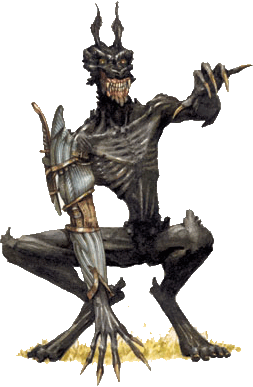
Fausts
Fausts barely qualify as a sentient race. They are as intelligent as humans, but they are extreme sociopaths, loners, and stalkers to a one. They are clever and dangerous, and are employed by unscrupulous masters for their willingness to do any job, no matter how dirty. Fausts are black skinned and bony, with clawed hands, feral legs, and a monstrous demon-jackal like head.
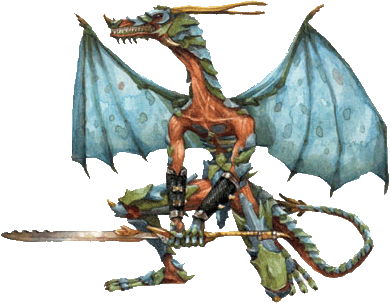
Chromithians
Chromitihians are small but colorful dragon people. They are noble bandits, once proud rulers of civilization, now preyers upon it. They have a humanoid body with dragon scales and a tail, a draconic head, and a pair of colored bat-like wings. Chromithians have a strong affinity for magic, and are excellent blenders of weapon and spell.
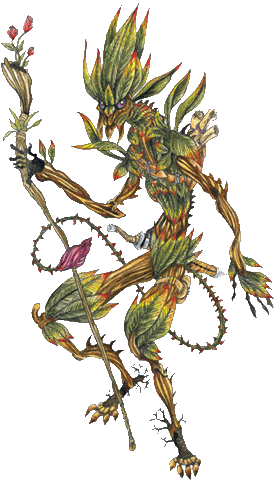
Thorn
Thorns are mobile intelligent plants. They are thin, but woody and strong. They look essentially like people made out of branches and leaves. Thorn can actually take many different shapes, they don’t need to be humanoid. It depends upon how they are pruned. Thorns are druidic defenders of the forest and the balance of ecosystems.
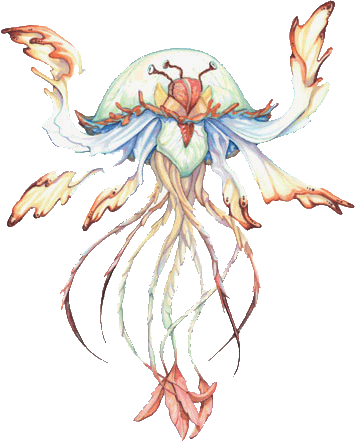
Ceptu
The ceptu are intelligent telekinetic jellyfish. They are highly magical creatures and blend science with magic more than any other culture. The ceptu are the merchants of the Forge, and dominate the oceans with their trade.
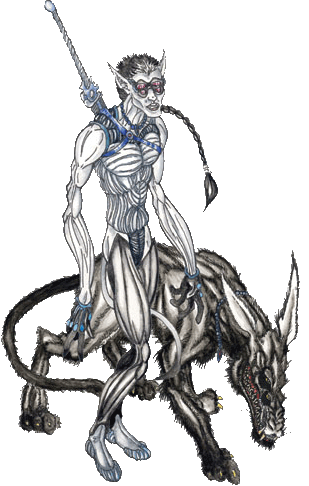
Lunars
Lunars are most common in the dark realm of Eclipse. They are shapechangers, able to switch from a jackal like form to a humanoid one at will. They have grey skin and pointed ears with four eyes and double jointed elbows and knees. They are skilled rogues and assassins.

Haze
The haze is a blind but noble creature that is hard to categorize. They are humanoid in shape, with multi-clawed limbs and smooth, muscular skin, protected with armored plates and spikes. Their heads consist of horns and a sharp beak with which they pierce their enemies and suck out their blood. Haze are telepaths and use psionics to echolocate their surroundings. They are good hearted and loyal creatures with low egos and sturdy backs.